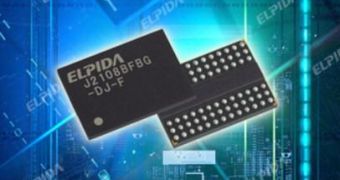We may have reported that DRAM chips momentarily gained in price a short time ago, but that was a shirt-lived reason to rejoice for makers of such things, as the situation isn't really improved overall.
It was only a few days ago that we learned of how DRAM pricing increased a bit after months and months of almost constant decline.
Apparently, that was, as many actually expected, a very brief and ultimately irrelevant episode in the grand scheme of things.
After all, DRAM prices have been dragging their boots, so to speak, for many months already, and a short rebound can't really have much of an impact.
Some time before the momentary recovery, we mentioned that prices were just as discouraging as ever.
Analysts now report that, even with the average selling prices of 2 GB DDR3 chips rising by about 9.1% (or by 17% for 2 Gb ETT), gloom still abounds.
The most obvious indicator of this is how the average price of 4 GB DDR3 modules has fallen under the $20 (14.74 Euro) mark.
All in all, manufacturers of random access memory chips have little reason to be overjoyed at the moment, especially since this situation persisted even after production capacity cuts and despite the BTS (back-to-school) season.
Meanwhile, consumers can only rejoice at how cheap RAM has become, although this doesn't say much, since lack of demand is, after all, the main cause behind all this.
As a consequence of this situation, the standard capacity of memory on laptops and desktops has turned from 2 GB in 4 GB.
This does not, however, mean that 4 GB chips have replaced 2 GB ones on the mainstream, although it is believed that 2012 will see this happen. Considering Samsung is already making 30nm-based things like this little item, the above is just a matter of time.

 14 DAY TRIAL //
14 DAY TRIAL //